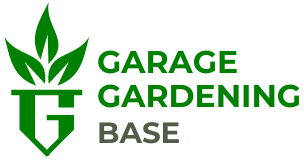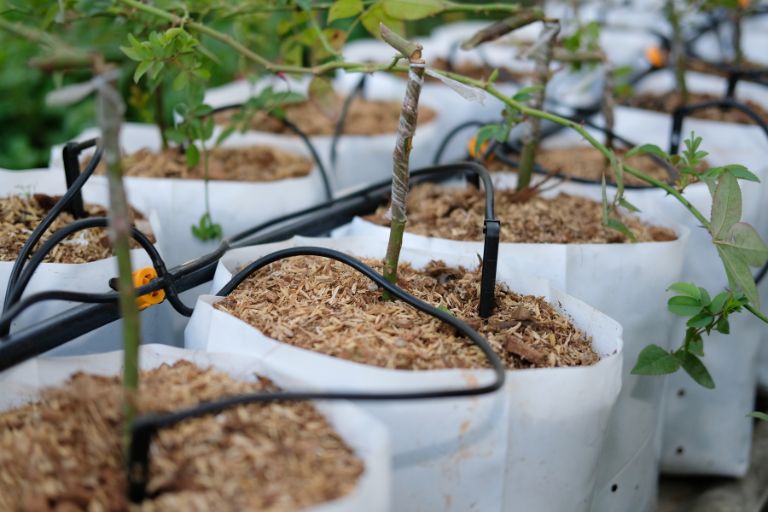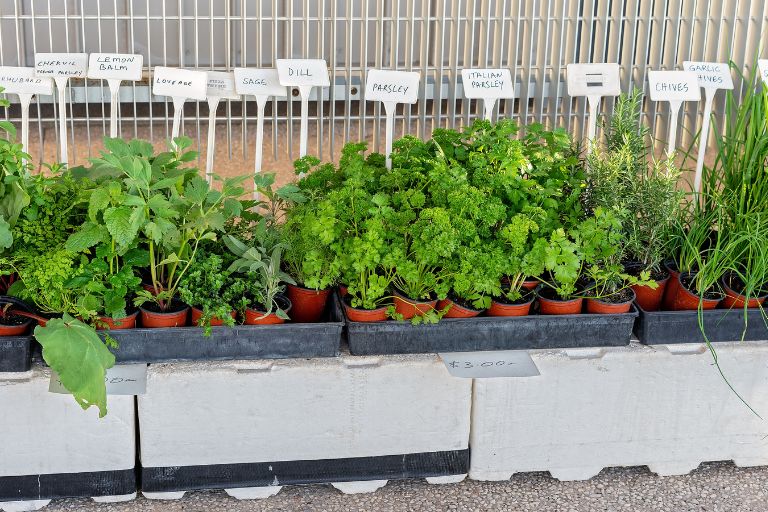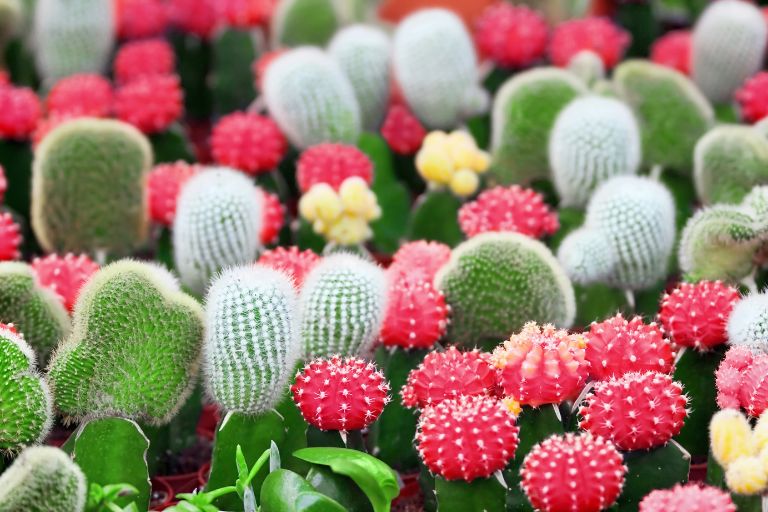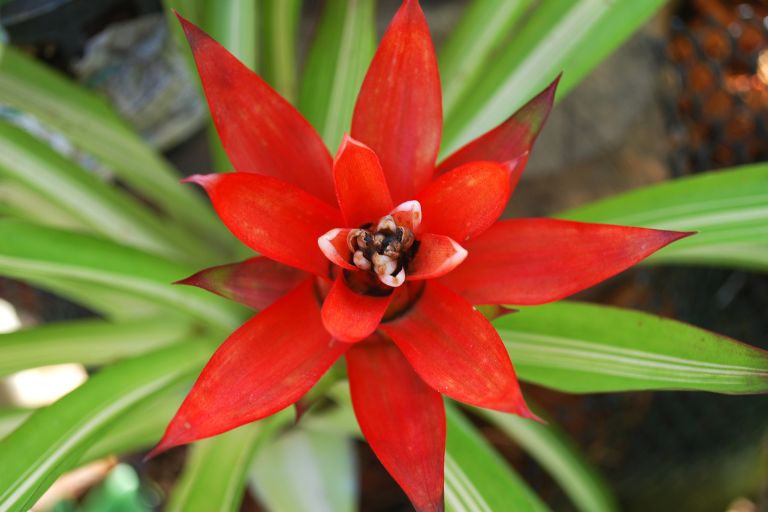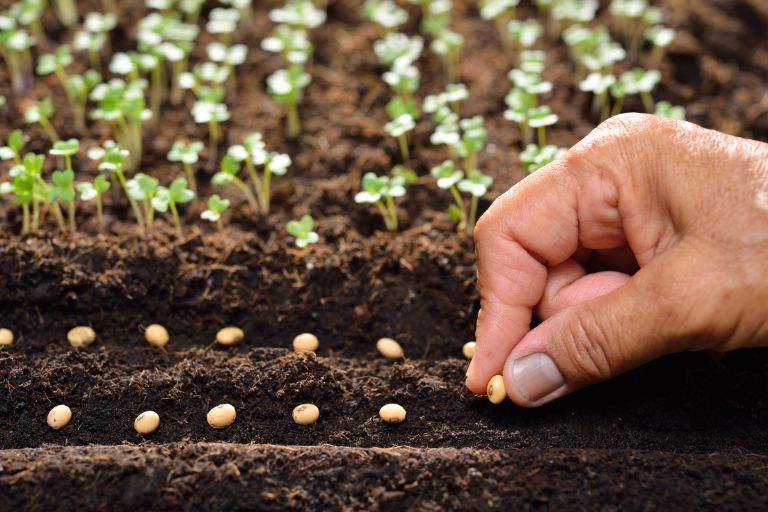Mastering Temperature Control in Your Garage Garden: Tips and Techniques
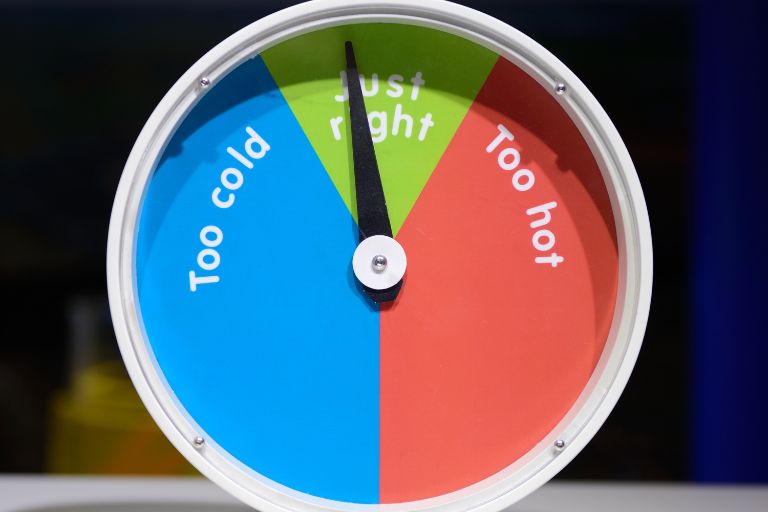
Garage gardens are sanctuaries for urban and suburban gardeners, providing a haven where greenery can thrive regardless of the fickle weather outside. But within the confines of these indoor growing spaces, mastering temperature control is a key challenge. The delicate dance of regulating heat or coolness can have a significant impact on the success of any gardening endeavour, influencing plant growth, health and yield. In this article we’ll look at insightful strategies and practical techniques designed to enable gardeners to create the ideal microclimate for their plants, ensuring thriving greenery and great harvests all year round. From insulation to ventilation, heating to cooling, and the sensible integration of technology, let us unravel the secrets to creating a thriving garden oasis in the heart of your garage.
Understanding Temperature Requirements
Understanding the temperature requirements of different plants is fundamental to successful gardening, especially in a garage environment where the outside weather cannot directly affect the growing area.
Optimal growth conditions
Plants have specific temperature ranges within which they grow best. Understanding these requirements allows gardeners to create an environment that promotes healthy growth, development and maximum productivity. For example, tropical plants typically require warmer temperatures, while cool season plants prefer cooler conditions.
Avoid stress and damage
Exposing plants to temperatures outside their preferred range can cause stress and damage. Extreme heat or cold can cause wilting, leaf burn, stunted growth or even death. By understanding the temperature preferences of different plants, gardeners can prevent such problems and maintain plant vitality.
Timing of planting and harvesting
Temperature requirements also dictate the timing of planting and harvesting. Some plants may need to be started indoors or in a controlled environment before being moved to the garage garden, while others may need protection from frost during colder months. Understanding these needs ensures that plants are planted and harvested at the optimum times for success.
Efficient resource allocation
By matching temperature control efforts to plant needs, growers can optimise resource allocation. This includes the use of energy for heating or cooling, as well as water and nutrients. Properly managing temperature levels based on plant needs minimises wasted resources and promotes sustainability in horticultural practices.
Maximising yield and quality
Meeting the temperature needs of plants is directly related to achieving maximum yield and quality. Whether growing fruit, vegetables, herbs or ornamental plants, maintaining the right temperature promotes vigorous growth, encourages flowering and fruiting, and improves overall plant health. This translates into higher yields of better quality produce for gardeners to enjoy.
Here are the ideal temperature ranges for some common garden crops grown in a garage environment:
Tomatoes
Ideal daytime temperature range – 21°C to 29°C (70°F to 85°F)
Night temperature range – 60°F to 70°F (15°C to 21°C)
Tomatoes thrive in warm conditions, but may suffer from flower drop or poor fruit set if daytime temperatures exceed 32°C (90°F).
Peppers
Ideal daytime temperature range – 21°C to 29°C (70°F to 85°F)
Night temperature range – 60°F to 70°F (15°C to 21°C)
Peppers prefer warm temperatures and may show slower growth or drop flowers in cooler conditions.
Herbs (such as basil, mint and coriander)
Ideal daytime temperature range – 60°F to 75°F (15°C to 24°C)
Night temperature range – 50°F to 65°F (10°C to 18°C)
Most herbs thrive in moderate temperatures and may suffer from reduced growth or bolting (premature flowering) in extreme heat.
Lettuce and leafy greens
Ideal daytime temperature range – 60°F to 70°F (15°C to 21°C)
Night temperature range – 45°F to 60°F (7°C to 15°C)
Lettuce and leafy greens prefer cooler temperatures and may wilt or develop bitter-tasting leaves in hot conditions.
Radishes
Ideal daytime temperature range – 50°F to 65°F (10°C to 18°C)
Night temperature range – 45°F to 55°F (7°C to 13°C)
Radishes grow best in cooler temperatures and may become spiny or develop woody roots in hot weather.
Carrots
Ideal daytime temperature range – 60°F to 70°F (15°C to 21°C)
Night temperature range – 50°F to 60°F (10°C to 15°C)
Carrots prefer moderate temperatures and may grow slowly or produce misshapen roots in excessively hot conditions.
Strawberries
Ideal daytime temperature range – 60°F to 80°F (15°C to 27°C)
Night temperature range – 50°F to 60°F (10°C to 15°C)
Strawberries thrive in a wide range of temperatures, but may suffer from reduced fruit production or poor fruit quality in extreme heat.
These temperature ranges are general guidelines and specific crops or varieties may have slightly different preferences. In addition, maintaining consistent temperatures within these ranges is essential for optimum growth and productivity in garage gardens.
The impact of temperature variation on plant growth and development cannot be overstated, as even small changes can have a significant impact on plants in a variety of ways:
Growth rate
Changes in temperature can alter the rate at which plants grow. Sudden increases in temperature can accelerate growth, resulting in elongated stems or premature flowering. Conversely, sudden drops in temperature can slow growth, delaying development and reducing overall productivity.
Flowering and fruit set
Many plants rely on specific temperature ranges to initiate flowering and fruit set. Fluctuations outside these optimal ranges can disrupt these processes, resulting in poor fruit set, abscission or delayed flowering. This phenomenon is particularly important for crops such as tomatoes, peppers and fruit trees, where consistent temperatures are essential for successful pollination and fruit development.
Nutrient uptake
Temperature variations can affect a plant’s ability to absorb nutrients from the soil. Extreme heat can raise soil temperatures, leading to water loss through evaporation and reducing nutrient availability. Conversely, cold temperatures can slow microbial activity in the soil, reducing nutrient uptake by plant roots. These disturbances in nutrient uptake can lead to nutrient deficiencies and negatively affect plant health and productivity.
Photosynthesis
Temperature fluctuations can affect the efficiency of photosynthesis, the process by which plants convert light energy into chemical energy to fuel growth. Extreme temperatures, whether hot or cold, can affect the function of enzymes involved in photosynthesis, reducing the uptake of carbon dioxide and limiting the production of sugars and other essential compounds. As a result, plants may show stunted growth, yellowing leaves or reduced vigour.
Stress response
Plants respond to temperature changes as environmental stressors, triggering physiological responses aimed at survival. Prolonged exposure to high temperatures can cause heat stress, resulting in wilting, leaf scorch or even tissue damage. Conversely, sudden cold snaps can cause freeze damage, resulting in cell rupture and tissue necrosis. These stress responses not only compromise plant health, but also make plants more susceptible to pests, diseases and environmental damage.
Temperature variations pose a significant challenge to plant growth and development, affecting various physiological processes essential for plant survival. To mitigate these effects, gardeners must strive to maintain stable temperature conditions within the optimal ranges for their specific plant species.
Insulation and Ventilation
Proper insulation plays a crucial role in regulating the temperature within a garage garden environment. Find out why it’s important:
Temperature stability
Insulation helps create a barrier between the inside of the garage and the outside environment, whether it’s hot or cold outside. By preventing heat transfer through walls, ceilings and floors, insulation helps to maintain a more stable indoor temperature. This stability is essential for providing consistent growing conditions for plants, which promotes steady growth and minimises stress-related problems.
Energy efficiency
Insulation helps reduce energy consumption by minimising the need for heating or cooling equipment to compensate for temperature fluctuations. By creating a more thermally efficient space, insulation allows gardeners to achieve and maintain desired temperatures with less energy. This not only reduces running costs, but also contributes to environmental sustainability by reducing greenhouse gas emissions associated with energy production.
Protection from extreme temperatures
In regions with harsh climates, garages can experience extreme temperature swings, from scorching heat in summer to freezing cold in winter. Proper insulation acts as a buffer against these extremes, providing a comfortable and safe environment for plants all year round. It helps prevent heat loss during cold spells and reduces heat gain during hot spells, ensuring that plants remain within their optimum temperature range.
Prevent condensation and moisture problems
Insulation also helps control moisture levels in the garage by minimising condensation, which can lead to mould, mildew and structural damage. By maintaining consistent temperature levels, insulation reduces the likelihood of condensation forming on surfaces such as walls and windows, thereby reducing the risk of moisture-related problems that can damage both equipment and infrastructure.
Sound and privacy
In addition to regulating temperature, insulation provides acoustic benefits by reducing the transmission of sound between the garage and the surrounding environment. This is particularly beneficial for urban gardeners who wish to minimise disturbance from traffic, neighbours or other sources. Insulation also improves privacy by reducing sound intrusion, creating a more secluded and tranquil space for gardening activities.
Effective garage insulation is essential for maintaining stable temperatures and creating an optimal environment for gardening. The following are some tips on how to effectively insulate a garage:
Choose the right insulation
Fibreglass – Fibreglass batt insulation is a common and cost-effective option for insulating garage walls and ceilings. It comes in pre-cut panels that are easy to install between wall studs and ceiling joists.
Foam board – Rigid foam board insulation offers high thermal resistance and can be installed on garage walls and ceilings. It provides excellent insulation value and can be cut to fit around obstructions such as pipes and electrical wiring.
Spray Foam – Spray foam insulation is a versatile option that can be applied directly to surfaces to create an airtight seal. It expands to fill gaps and cracks, providing superior insulation and moisture resistance.
Reflective Foil Insulation – Reflective foil insulation reflects radiant heat and can be installed in addition to other types of insulation to improve thermal performance.
Seal gaps and cracks
– Use caulk or expanding foam sealant to fill gaps and cracks around windows, doors, electrical outlets and plumbing penetrations. This will prevent air leakage and improve the effectiveness of insulation.
– Install weather stripping around garage doors to seal gaps and prevent drafts. Consider installing a floor seal or sill to minimise air infiltration under the garage door.
– Insulate garage door panels with foam board or reflective foil insulation to reduce heat transfer through the door.
Insulate garage doors
– Install an insulated garage door or add insulation panels to existing garage doors to improve thermal efficiency. Insulated garage doors have a layer of insulation sandwiched between steel or aluminium panels, which helps maintain stable temperatures inside the garage.
– Consider adding a garage door insulation kit, which typically includes foam panels or reflective foil insulation that can be attached to the inside of the garage door panels.
Insulate attics
– If your garage has an attic, insulate the attic floor to prevent heat loss through the roof. Use fibreglass batt insulation or blown-in insulation to achieve the desired level of insulation.
– Ensure that attic vents are installed to provide ventilation and prevent moisture build-up in the attic space.
Consider a vapour barrier
Depending on your climate and local building codes, consider adding a vapour barrier to the inside of the insulation to prevent moisture infiltration. This is especially important in humid climates to prevent condensation from building up inside the walls.
Ventilation plays a crucial role in maintaining optimal temperatures and promoting air circulation in a garage garden environment. The following is how ventilation helps to regulate temperatures and prevent heat build-up or cold spots:
Temperature regulation
Ventilation facilitates the exchange of indoor and outdoor air, helping to regulate the temperature inside the garage. In warmer months, adequate ventilation allows hot air to escape, preventing heat build-up and keeping the interior cooler. Similarly, in colder months, ventilation helps to remove stagnant air and moisture, reducing the risk of cold spots and maintaining a more even temperature throughout the space.
Moisture control
Proper ventilation helps control humidity levels by removing excess moisture from the air. High humidity levels can cause condensation to form on surfaces, encouraging the growth of mould and mildew, which can be detrimental to both plants and structural integrity. By promoting airflow and allowing moisture to escape, ventilation helps prevent moisture-related problems and creates a healthier environment for plants.
Air circulation
Ventilation promotes air circulation within the garage, distributing heat evenly and preventing the formation of cold spots. Stagnant air can cause temperature variations within the room, which can affect plant growth and health. By facilitating air movement, ventilation ensures that warm air is evenly distributed, optimising growing conditions for plants throughout the garage garden.
Pest and disease prevention
Adequate ventilation can help deter pests and diseases by creating an environment that is less conducive to their proliferation. Stagnant air can create favourable conditions for pests such as aphids, spider mites and fungal diseases to thrive. By promoting airflow, ventilation helps to disrupt pest habitats and reduce the risk of infestation, protecting plants from damage and disease.
Remove odours and air pollutants
Ventilation helps remove odours and air pollutants from the greenhouse environment, improving air quality for both plants and gardeners. Indoor gardening activities such as fertilising, watering and pruning can release odours and volatile organic compounds (VOCs) into the air. Proper ventilation helps to dissipate these odours and pollutants, creating a fresher and healthier growing environment.
Integration with heating and cooling systems
Ventilation can complement heating and cooling systems by helping to distribute conditioned air throughout the garage. In conjunction with heating systems, ventilation helps to distribute warm air evenly, preventing hot spots and ensuring uniform temperatures. Similarly, during cooling periods, ventilation helps to distribute cool air, promoting thermal comfort and reducing the need for excessive air conditioning.
Heating and Cooling Solutions
There are a number of heating options available to maintain optimum temperatures in garage gardens, to suit different needs and preferences. The following is an exploration of some suitable heating options:
Space heaters
Electric space heaters – Electric space heaters are versatile and widely used for heating garage spaces. They come in a variety of sizes and designs, including portable units with built-in thermostats and programmable settings. Electric space heaters provide fast and efficient heating, making them ideal for maintaining consistent temperatures in garage gardens. However, they can use more energy than other heating options.
Propane or natural gas heaters – Propane or natural gas heaters offer powerful heating capabilities and are often used in larger garage spaces. They offer an alternative to electric heaters and can be more cost effective in areas where electricity prices are high. However, proper ventilation is essential when using gas heaters to prevent carbon monoxide build-up.
Radiant heaters
Infrared radiant heaters – Infrared radiant heaters emit infrared radiation that heats objects and surfaces directly without heating the surrounding air. This makes them an efficient option for spot heating specific areas within the garage, such as plant shelves or workstations. Infrared heaters are available in portable or ceiling-mounted models and offer quiet operation and energy-efficient heating.
Heat mats or cables
Seedling Heat Mats – Seedling Heat Mats are designed to provide gentle bottom heat to seed trays to promote seed germination and early plant growth. They are particularly useful for starting seeds in cooler environments or in the early stages of plant propagation in garage gardens. Seed mats are available in a range of sizes and can be placed under seed trays or propagation trays.
Soil heating cables – Soil heating cables are buried in the soil or potting mix to provide even heating to plant roots, promoting root growth and nutrient uptake. They are commonly used in greenhouses, but can also be used in garage gardens to create a warm microclimate for heat-loving plants. Soil heating cables are available in a range of lengths and wattages, allowing gardeners to tailor heating solutions to their specific needs.
Portable or oil-filled heaters
Portable or oil-filled heaters are another option for heating garage spaces. These heaters contain heating elements that are immersed in oil, which heats up and radiates heat to the surrounding area. Oil-filled radiators offer quiet operation and even heat distribution, making them suitable for maintaining consistent temperatures in garage gardens. They are available in a range of sizes and often have adjustable thermostats for temperature control.
Forced air heaters
Forced air heaters use a fan to distribute heated air throughout the garage space, providing fast and efficient heating. These heaters are available in electric or propane/natural gas models and are suitable for larger garage areas. Forced air heaters offer powerful heating capabilities and can quickly raise garage temperatures, but proper ventilation is essential to prevent moisture build-up and maintain air quality.
Choosing the right heating solution for your garage garden depends on a number of factors, including the size of the garage, specific plant requirements and energy efficiency. The following are some recommendations to help you choose the most suitable heating option:
Evaluate garage size
For small to medium sized garages – Electric space heaters, infrared heaters or portable heaters may be sufficient to maintain adequate temperatures. These options offer flexibility and convenience for heating smaller spaces effectively.
For larger garages – Consider more powerful heating options such as propane or natural gas space heaters or forced-air heaters. These heaters offer greater heating capacity and can effectively heat larger garage areas.
Consider plant requirements
Determine the temperature requirements of your plants – Different plants have different temperature preferences, so it’s important to choose a heating solution that can meet their specific needs. For example, tropical plants may require warmer temperatures, while cool season plants may thrive in cooler conditions.
Choose heating options that offer precise temperature control – Look for heaters with adjustable thermostats or programmable settings that allow you to maintain consistent temperatures within the desired range for your plants.
Prioritise energy efficiency
Choose energy-efficient heating options – Choose heaters that are ENERGY STAR certified or have high energy efficiency ratings. Electric heaters with thermostatic controls or programmable settings can help minimise energy consumption by operating only when needed and maintaining optimal temperatures more efficiently.
Consider supplemental heating solutions – Rather than heating the entire garage, focus on providing targeted heat to specific areas where plants are located. For example, use seedling heating mats or ground heating cables to provide floor heat to seed trays or plant containers, reducing overall energy use.
Insulate the garage effectively – Proper insulation helps retain heat and minimise heat loss, reducing the load on heating systems and improving energy efficiency. Insulate walls, ceilings and garage doors with insulation materials such as fibreglass, foam board or reflective foil insulation.
Ensure safety
Prioritise safety features – Choose heating options with built-in safety features such as tip-over protection, overheat protection and automatic shut-off. These features help prevent accidents and ensure safe operation, especially in unattended or indoor environments.
Follow manufacturer’s instructions – Read and follow the manufacturer’s instructions for the installation, use and maintenance of heating equipment to ensure safe and efficient operation. Place heaters away from flammable materials, provide adequate ventilation and avoid overloading electrical circuits.
Combating high temperatures during the warmer months in garage gardens requires effective cooling methods to maintain optimal growing conditions for plants. Cooling methods, including fans, air conditioners and evaporative coolers, are covered below:
Fans
– Fans are an affordable and energy-efficient option for cooling garage spaces. They work by circulating air, promoting airflow and reducing stagnant pockets of hot air. Oscillating or ceiling fans can help distribute cool air more effectively throughout the garage.
– Box or pedestal fans can be strategically placed near plant shelves or work areas to provide targeted cooling. They can also help dissipate heat generated by lighting fixtures or other equipment.
– Consider using exhaust fans or attic fans to draw hot air out of the garage. This will help dissipate heat and lower temperatures, especially during peak heat periods.
Air conditioners
Portable air conditioners – Portable air conditioners are a versatile option for cooling garage spaces. They are easy to install and can be moved to different locations as required. Portable air conditioners typically require venting through a window or door to expel hot air.
Window air conditioners – Window air conditioners are another popular choice for cooling garage spaces. They are installed directly in a window opening and provide powerful cooling capabilities. Window air conditioners are available in a variety of sizes and cooling capacities to suit different garage sizes and cooling needs.
Ductless mini-split systems – Ductless mini-split air conditioning systems consist of an outdoor compressor unit and one or more indoor air handling units. They offer flexible installation options and provide efficient cooling with customisable temperature control for individual zones within the garage.
Evaporative coolers (swamp coolers)
– Evaporative coolers use the natural process of evaporation to cool air. They draw warm air through moistened pads or filters where it is cooled by evaporation, and then circulate the cooled air throughout the garage. Evaporative coolers are effective in dry climates and can provide significant cooling while using less energy than traditional air conditioning.
– Portable evaporative coolers are available in various sizes and can be used to cool specific areas within the garage. They require a constant supply of water to maintain cooling and may not be suitable for humid environments.
Combination approaches
– Combining several cooling methods can increase effectiveness and efficiency. For example, using a combination of fans and evaporative coolers can provide both air circulation and evaporative cooling, resulting in greater overall cooling capacity.
– Integrating insulation and proper ventilation strategies with cooling methods helps to optimise energy efficiency and maintain stable temperatures in the garage garden.
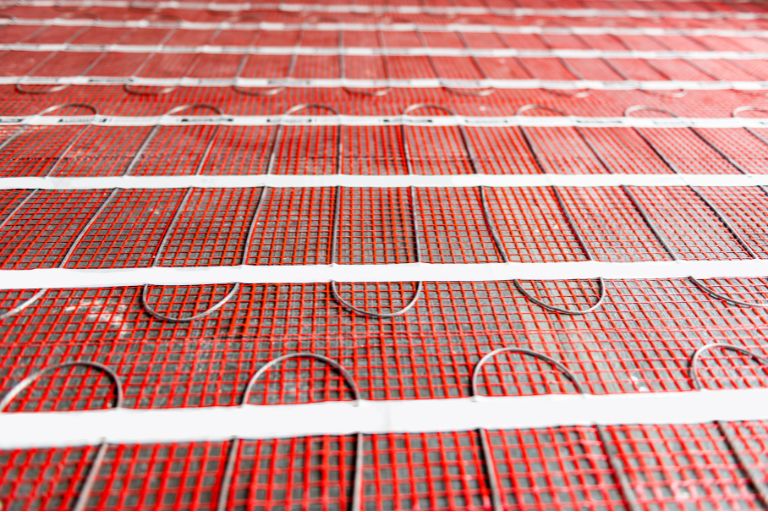
Thermostat and Automation
The use of a thermostat to accurately monitor and control temperature levels is paramount in garage gardening for a number of compelling reasons:
Precision control
A thermostat provides precise control over temperature levels, allowing gardeners to maintain optimal growing conditions for their plants. By setting desired temperature parameters, gardeners can ensure that temperatures remain within the ideal range for plant growth and productivity.
Prevent temperature fluctuations
Temperature fluctuations can stress plants and disrupt their growth cycles. A thermostat helps prevent sudden temperature spikes or drops by continuously monitoring the ambient temperature and activating heating or cooling systems as needed to maintain stability.
Avoid temperature extremes
Extreme temperatures, whether too hot or too cold, can be detrimental to plant health. A thermostat helps prevent these extremes by automatically adjusting heating or cooling systems to keep temperatures within a specified range, minimising the risk of heat stress, frost damage or other temperature-related problems.
Energy efficiency
The use of a thermostat helps to optimise energy use by ensuring that heating or cooling systems only operate when necessary. By maintaining precise temperature control, gardeners can minimise energy consumption, reduce utility costs and promote environmentally sustainable gardening practices.
Remote monitoring and control
Many modern thermostats are equipped with remote monitoring and control capabilities, allowing gardeners to monitor temperature levels and adjust settings from anywhere using a smartphone or computer. This allows real-time monitoring of temperature conditions and the ability to make adjustments as needed, even when away from the garden.
Prevent overheating or freezing
Certain plants have specific temperature requirements for optimal growth, flowering and fruiting. A thermostat helps to prevent overheating or freezing by ensuring that temperatures remain within the appropriate range for the plants being grown. This helps to maximise plant health, yield and overall garden success.
Peace of mind
By using a thermostat to accurately monitor and regulate temperature levels, gardeners can rest assured that their plants are being cared for in the optimum environment. Whether growing delicate seedlings or mature plants, maintaining precise temperature control is essential to promoting healthy growth and achieving gardening goals.
Smart thermostat options with automation features are revolutionising temperature control in the greenhouse, offering unprecedented precision and convenience. These advanced thermostats use cutting-edge technology to monitor, regulate and optimise temperature levels with unparalleled accuracy, enabling gardeners to effortlessly create the perfect growing environment.
Smart thermostats are designed to integrate seamlessly into the home gardening environment, offering intuitive control and real-time monitoring through easy-to-use interfaces. Equipped with built-in sensors, these thermostats continuously assess temperature conditions and automatically adjust heating or cooling systems to maintain optimal levels tailored to the specific needs of the plants.
What sets smart thermostats apart is their automation features, which enable hands-free operation and intelligent temperature management. With programmable schedules and customisable settings, gardeners can fine-tune temperature parameters based on plant requirements, seasonal variations and personal preferences. Whether it’s maintaining consistent temperatures during the day, optimising cooling at night or adjusting settings remotely, smart thermostats offer unparalleled flexibility and control.
In addition, smart thermostats often come with additional features such as remote monitoring, energy usage tracking and integration with smart home ecosystems. Gardeners can monitor temperature levels and receive alerts on their smartphones, providing peace of mind and enabling proactive management of temperature fluctuations, even when away from the garden.
Integrating temperature control systems with smartphone apps or home automation platforms offers numerous benefits for remote monitoring and control of garage gardening:
Real-time monitoring
Smartphone apps allow gardeners to monitor temperature levels in real time from anywhere, providing instant access to critical information about the garage garden environment. This feature allows gardeners to stay informed of temperature fluctuations and respond quickly to any changes, ensuring optimal growing conditions for plants.
Remote adjustment
Using smartphone apps or home automation platforms, gardeners can remotely adjust temperature settings and control heating or cooling systems with a simple tap or swipe on their mobile devices. This flexibility allows for quick and convenient adjustments to maintain ideal temperature levels, even when away from home or unable to physically access the garage garden.
Customised schedules
Temperature control systems integrated with smartphone apps or home automation platforms often offer customisable scheduling options. Gardeners can create personalised schedules based on plant requirements, seasonal variations and personal preferences. This allows for automatic temperature adjustments throughout the day and night, optimising growing conditions without constant manual intervention.
Energy efficiency
Integrating temperature control systems with smartphone apps or home automation platforms promotes energy efficiency by allowing precise control and optimisation of heating and cooling systems. Growers can set temperature thresholds, implement energy-saving modes and schedule temperature adjustments to minimise energy consumption while maintaining optimal growing conditions.
Notifications and alerts
Smartphone apps and home automation platforms can send notifications and alerts to gardeners’ devices, providing updates on temperature conditions, system status and any potential problems or anomalies. These alerts allow gardeners to stay informed and take immediate action to address any concerns, ensuring the health and well-being of their plants.
Data analysis and insight
Some temperature control systems offer data logging and analysis capabilities, allowing gardeners to track temperature trends over time, identify patterns and gain insight into the performance of their greenhouse environment. By analysing temperature data, growers can make informed decisions, optimise temperature control strategies and continually improve growing conditions for better plant health and productivity.
Seasonal Considerations
Seasonal temperature variations pose a significant challenge to garage gardens, affecting plant growth, development and overall health. Understanding these variations and their effects is crucial to maintaining optimal growing conditions throughout the year. The following is an overview of how seasonal temperature variations can affect garage gardens throughout the year:
Spring
Temperature Variability – Spring is characterised by fluctuating temperatures as the weather transitions from winter to summer. Cold snaps and frosts can occur, posing a risk to tender plants and seedlings.
Growth acceleration – Warmer temperatures in spring stimulate plant growth, encouraging the emergence of new shoots, leaves and flowers. However, sudden drops in temperature can slow growth or damage emerging leaves.
Summer
High heat and humidity – Summer brings high temperatures and increased humidity, creating challenges for temperature control in garage gardens. Excessive heat can stress plants, increase water requirements and lead to heat-related problems such as wilting or sunburn.
Cooling strategies – To combat high temperatures, gardeners may need to use cooling strategies such as fans, air conditioners or evaporative coolers. Adequate ventilation and shading can also help reduce heat build-up and maintain comfortable growing conditions.
Fall
Temperature drop – As temperatures begin to cool in fall, garage gardens may experience fluctuations as daytime temperatures drop and nights become colder. Plants may respond to these changes by slowing growth and preparing for dormancy.
Harvest time – Fall is harvest time for many garden crops, including vegetables, fruits and herbs. Gardeners need to monitor temperatures to ensure optimal conditions for ripening and storing harvested produce.
Winter
Cold and frost – Winter poses the greatest challenge to garage gardens as temperatures drop significantly and frosts become more frequent. Cold sensitive plants may require additional protection from freezing temperatures to prevent damage or death.
Heating requirements – Heating systems are essential during the winter to maintain temperatures within the appropriate range for plant growth. Insulation, supplementary heating and proper ventilation are essential to protect plants from cold stress and maintain their health during the winter months.
Seasonal maintenance is essential for adapting temperature control strategies in garage gardens to changing weather conditions throughout the year. The following are seasonal maintenance tips to optimise temperature control strategies:
Spring
Monitor weather forecasts – Stay informed about upcoming weather patterns, including potential cold snaps or frost events. Be prepared to protect tender plants by covering them with frost blankets or moving them indoors if necessary.
Adjust heating – Gradually reduce heating as outdoor temperatures rise. Lower thermostat settings or reduce heating run times to prevent overheating and maintain comfortable temperatures for plants.
Summer
Increase cooling – As summer temperatures rise, prioritise cooling strategies to prevent heat stress to plants. Increase ventilation by using fans or opening windows and doors during cooler times of the day. Consider installing or using air conditioning or evaporative coolers to maintain optimal temperatures.
Shade plants – Provide shade for sun-sensitive plants by using shade cloth, umbrellas or temporary structures to protect them from intense sunlight and reduce heat build-up.
Fall
Prepare for temperatures to drop – Monitor temperature trends as fall approaches and prepare for cooler weather. Adjust heating settings or increase heating system run times to maintain consistent temperatures as outdoor temperatures drop.
Extend the growing season – Consider using supplemental lighting and heating methods to extend the growing season into fall. Row covers or cold frames can also provide additional insulation and protection from cold temperatures.
Winter
Winterise heating systems – Before winter sets in, inspect and maintain heating systems to ensure they are in good working order. Clean or replace air filters, check for leaks or malfunctions, and stock up on fuel or supplies as needed.
Monitor insulation – Check insulation levels and seals around doors, windows and vents to prevent heat loss and drafts. Consider adding additional insulation or weatherstripping to improve energy efficiency and maintain stable temperatures.
Adjust ventilation – Adjust ventilation to prevent excessive heat loss while maintaining adequate airflow and moisture control. Adjust vents or dampers to regulate airflow and prevent condensation in the garage.
Throughout the year
Regular monitoring – Continuously monitor temperature levels with a thermostat or temperature monitor. Keep track of temperature trends and adjust temperature control strategies accordingly to maintain optimal growing conditions.
Inspect equipment – Regularly inspect and maintain heating, cooling and ventilation equipment to ensure proper operation and efficiency. Clean or replace filters, check for leaks or damage, and perform routine maintenance as recommended by the manufacturer.
Implementing seasonal techniques, such as using insulation to retain heat in winter or optimising airflow for cooling in summer, offers a number of benefits for garage gardens. Here’s what you need to know:
Improved energy efficiency
Seasonal techniques help optimise energy use by focusing on the specific heating or cooling needs of each season. For example, in winter, proper insulation minimises heat loss, reducing the load on heating systems and lowering energy consumption. Similarly, optimising airflow in summer reduces reliance on air conditioning, resulting in energy savings.
Improved temperature control
By tailoring techniques to the season, gardeners can better regulate temperatures within the garage garden environment. Insulation traps heat in winter, maintaining warmer temperatures and protecting plants from frost damage. Conversely, optimising airflow in the summer helps to dissipate heat and prevent overheating, creating a comfortable growing environment for plants.
Protection from extreme weather
Seasonal techniques provide added protection against extreme weather conditions such as cold snaps, heat waves or temperature fluctuations. Insulation acts as a barrier to freezing temperatures in winter, protecting plants from frost damage and maintaining consistent temperatures. Optimising airflow in summer prevents heat build-up and reduces the risk of heat stress or sunburn in plants.
Improved plant health and growth
By creating a stable and conducive environment, seasonal techniques promote healthier plant growth and development throughout the year. Insulation ensures that plants receive consistent warmth in winter, encouraging root growth and minimising periods of dormancy. Optimising airflow in summer prevents heat stress, improves air circulation and supports photosynthesis, resulting in vigorous plant growth and higher yields.
Extend the growing season
Seasonal techniques can extend the growing season for garage gardens, allowing gardeners to cultivate plants for longer periods of time. Proper insulation retains heat in winter, creating a microclimate that protects plants from freezing temperatures and allows year-round gardening. Optimising airflow in summer helps reduce heat stress, allowing plants to thrive even during the hottest months.
Cost savings
Implementing seasonal techniques can lead to cost savings by reducing energy costs associated with heating and cooling. Insulation reduces the need for continuous heating in winter, resulting in lower heating bills. Similarly, optimising airflow in summer reduces the need for air conditioning, leading to lower cooling costs.
Tips and Best Practices
Optimising temperature control in a garage garden involves several strategies, including the strategic positioning of plants within the space. The following are some practical tips for optimising temperature control:
Consider temperature preferences
Group plants with similar temperature requirements together to create microclimates within the garage garden. For example, heat-loving plants can be placed closer to heat sources or sunlight, while cool-season plants can be placed in shaded areas or away from direct heat sources.
Use shelves or racks
Use shelves or racks to maximise vertical space and organise plants according to their temperature and light requirements. Place shelves closer to windows or light sources for plants that require more sunlight, while placing shade-tolerant plants on lower shelves.
Monitor temperature fluctuations
Use a thermometer to monitor temperature fluctuations in different areas of the garage garden. Identify areas with consistent temperatures and adjust plant placement accordingly to ensure each plant receives the appropriate amount of warmth or coolness.
Use reflective surfaces
Reflective surfaces, such as white walls or reflective foil insulation, can help distribute light evenly and prevent overheating in certain areas. Place plants near reflective surfaces to take advantage of indirect light and reduce the risk of temperature swings.
Provide adequate ventilation
Ensure proper airflow and ventilation in the garage garden to prevent heat build-up and promote air circulation. Position plants away from obstructions or obstacles that may impede airflow, such as walls or furniture, and use fans or vents to improve ventilation if necessary.
Adjust plant placement seasonally
Adjust plant placement seasonally to accommodate changing temperature conditions. Move heat sensitive plants away from direct sunlight or heat sources during the hottest months of summer, and move cold sensitive plants closer to heat sources or insulation during the winter.
Use thermal mass
Incorporate thermal mass elements, such as water-filled containers or large rocks, to help regulate temperature fluctuations. Place thermal mass objects strategically throughout the garage garden to absorb and release heat, stabilising temperatures and creating a more consistent growing environment.
Insulate plant containers
Insulate plant containers with materials such as foam insulation or bubble wrap to protect roots from temperature extremes. Wrap containers in insulation or place them on insulated surfaces to maintain stable soil temperatures and prevent damage to plant roots.
Monitoring humidity levels is crucial in garage gardening as it has a direct effect on plant health, growth and overall environmental conditions. Humidity interacts closely with temperature regulation, and maintaining the right balance is essential to creating an optimal growing environment. The following explains why it’s important to monitor humidity levels and how it interacts with temperature regulation:
Plant health and growth
Humidity levels affect plant transpiration, the process by which plants release moisture through their leaves. High humidity can slow transpiration, causing moisture to build up on plant surfaces and increasing the risk of fungal diseases such as powdery mildew and botrytis. Low humidity can speed up transpiration, causing plants to lose moisture rapidly, leading to wilting and dehydration.
Temperature regulation
– Humidity levels affect how temperature feels to both plants and gardeners. High humidity can make temperatures feel warmer than they are by reducing the evaporation of sweat from the skin, causing discomfort for plants and people alike. Conversely, low humidity can make temperatures feel cooler because moisture evaporates more quickly, leading to dry and arid conditions.
– Temperature control strategies, such as heating or cooling, may need to be adjusted based on humidity levels to maintain a comfortable environment conducive to plant growth. For example, during periods of high humidity, additional cooling may be required to offset the heat retention caused by moisture in the air.
Pest and disease management
Humidity levels play an important role in pest and disease management in garage gardens. High humidity can create favourable conditions for pests such as spider mites, aphids and whiteflies, leading to increased infestations. It also provides an ideal environment for fungal diseases to thrive and spread.
Environmental control
– Humidity levels interact with temperature control systems such as heating, cooling and ventilation in garage gardens. High humidity can affect the efficiency of cooling systems by reducing the rate of evaporation and heat transfer, while low humidity can lead to faster moisture loss and increased water requirements for plants.
– By monitoring humidity levels alongside temperature, gardeners can fine-tune environmental control systems to achieve optimum conditions for plant growth and minimise energy consumption. This may involve adjusting ventilation rates, using dehumidifiers or humidifiers, and incorporating moisture-retaining materials or methods to maintain stable humidity levels.
Troubleshooting common temperature-related problems in greenhouse horticulture requires careful observation, analysis and adjustment of temperature control strategies. The following is a guide to help you identify these problems and deal with them effectively:
Temperature Fluctuations
Cause
Fluctuating temperatures can be caused by inadequate insulation, improper ventilation, malfunctioning heating or cooling systems, or external weather conditions.
Solution
Check insulation – Inspect insulation and seals around doors, windows and vents for gaps or damage. Repair or replace insulation as necessary to prevent heat loss or infiltration.
Improve ventilation – Ensure proper airflow and ventilation in the garage by using fans, vents or windows to regulate airflow and remove excess heat or moisture.
Maintain heating or cooling systems – Schedule regular maintenance and inspections for heating and cooling systems to ensure they are working properly. Clean or replace filters, check for leaks or malfunctions, and adjust settings as needed.
Monitor weather conditions – Stay informed about external weather patterns and adjust temperature control strategies accordingly to minimise the impact of temperature fluctuations on plants.
Temperature extremes (too hot or too cold)
Cause
Extreme temperatures can be caused by inadequate insulation, insufficient heating or cooling capacity, improper positioning of equipment or external weather conditions.
Solution
Adjust insulation – Increase insulation levels or add additional insulation materials to retain heat during cold periods and prevent heat build-up during hot periods.
Upgrade heating or cooling systems – Consider upgrading heating or cooling systems to provide sufficient capacity to maintain stable temperatures in the garage garden. If necessary, install additional heaters or fans to deal with extreme temperatures.
Reposition plants – Move heat sensitive plants away from direct sunlight or heat sources during hot periods and move cold sensitive plants closer to heat sources or insulation during cold periods.
Use shading – Use shade cloth, umbrellas or temporary structures to provide shade for plants during peak hours of sunlight to reduce the risk of heat stress or sunburn.
Uneven temperature distribution
Cause
Uneven temperature distribution can be caused by poor airflow, inadequate insulation, inefficient heating or cooling systems, or obstructions that block airflow.
Solution
Improve ventilation – Ensure proper airflow and circulation in the garage by using fans, vents or oscillating fans to distribute air evenly throughout the space.
Improve insulation – Improve insulation in areas with uneven temperature distribution to minimise heat loss or infiltration and maintain more consistent temperatures.
Adjust heating or cooling systems – Adjust heating or cooling system settings to ensure even temperature distribution in different areas of the garage garden. Consider installing additional heaters or fans in areas with poor airflow or insulation.
Humidity imbalance
Cause
Humidity imbalance can be caused by inadequate ventilation, excessive moisture from watering or external weather conditions.
Solution
Adjust ventilation – Improve airflow and ventilation in the garage to reduce humidity levels and prevent moisture build-up. Use exhaust fans, vents or dehumidifiers to remove excess moisture from the air.
Monitor watering practices – Avoid overwatering plants as excess moisture can contribute to high humidity levels. Allow the soil to dry out between waterings and adjust watering frequency according to plant needs and environmental conditions.
Use humidity monitors – Install hygrometers or humidity sensors to monitor humidity levels and adjust temperature control strategies accordingly. Maintain humidity within the optimum range for plant health and growth.
Effective temperature control is essential to creating a favourable environment for successful greenhouse horticulture. By implementing appropriate temperature control strategies such as insulation, ventilation, heating and cooling, gardeners can maintain optimal temperature and humidity levels throughout the year, promoting healthy plant growth and productivity.
Throughout this guide we’ve explored various aspects of temperature control in garage gardening, including the importance of understanding plant temperature requirements, the impact of temperature fluctuations on plant growth and practical tips for optimising temperature control strategies. We’ve also discussed the importance of monitoring humidity levels and how they interact with temperature control, as well as guidance on troubleshooting common temperature-related problems and making the necessary adjustments.
Whether it’s adjusting heating settings to combat the winter cold, optimising airflow for summer cooling or monitoring humidity levels to prevent moisture-related problems, greenhouse growers play a crucial role in creating a stable and conducive environment for their plants.
